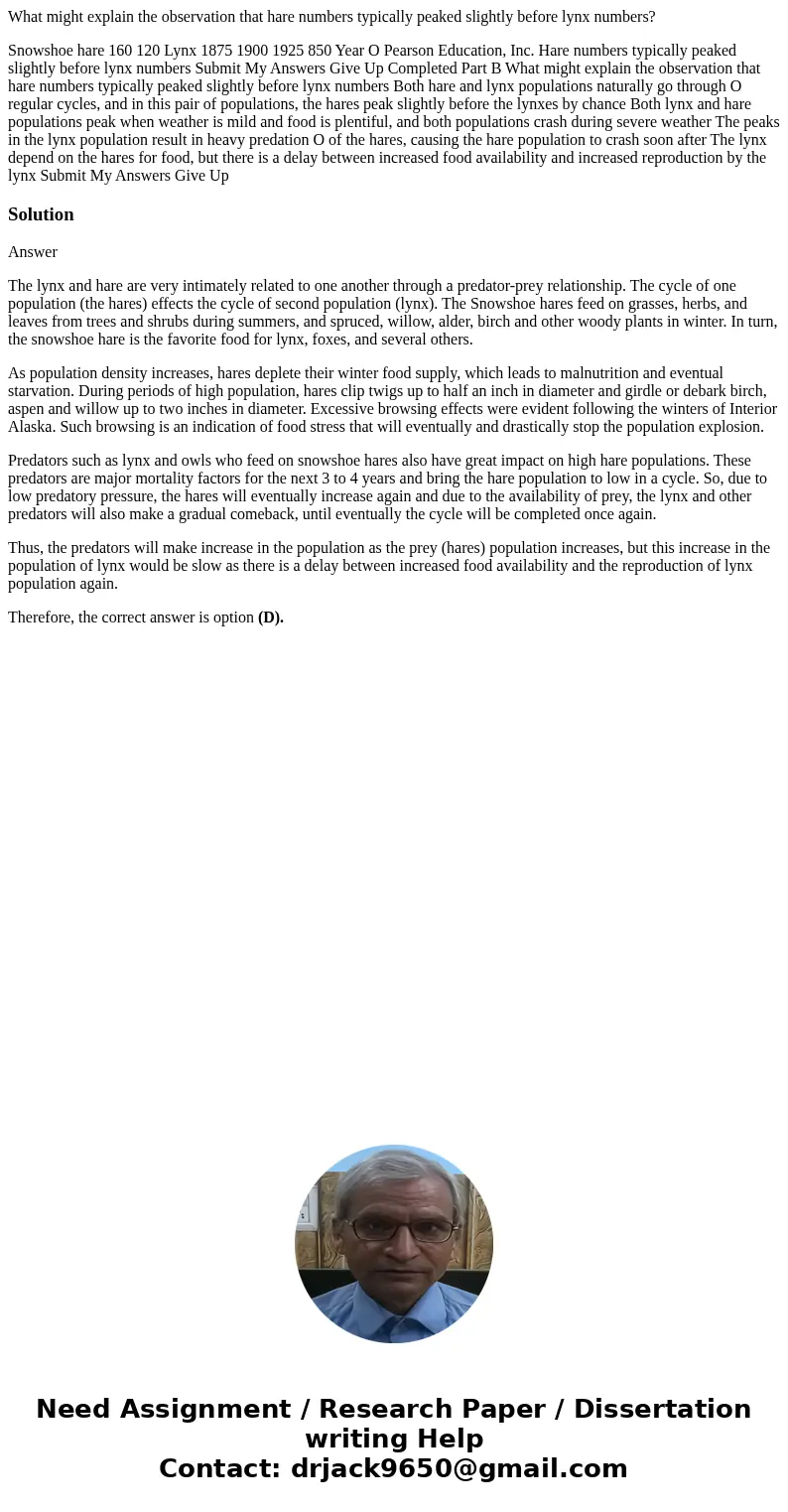What might explain the observation that hare numbers typical
What might explain the observation that hare numbers typically peaked slightly before lynx numbers?
Snowshoe hare 160 120 Lynx 1875 1900 1925 850 Year O Pearson Education, Inc. Hare numbers typically peaked slightly before lynx numbers Submit My Answers Give Up Completed Part B What might explain the observation that hare numbers typically peaked slightly before lynx numbers Both hare and lynx populations naturally go through O regular cycles, and in this pair of populations, the hares peak slightly before the lynxes by chance Both lynx and hare populations peak when weather is mild and food is plentiful, and both populations crash during severe weather The peaks in the lynx population result in heavy predation O of the hares, causing the hare population to crash soon after The lynx depend on the hares for food, but there is a delay between increased food availability and increased reproduction by the lynx Submit My Answers Give UpSolution
Answer
The lynx and hare are very intimately related to one another through a predator-prey relationship. The cycle of one population (the hares) effects the cycle of second population (lynx). The Snowshoe hares feed on grasses, herbs, and leaves from trees and shrubs during summers, and spruced, willow, alder, birch and other woody plants in winter. In turn, the snowshoe hare is the favorite food for lynx, foxes, and several others.
As population density increases, hares deplete their winter food supply, which leads to malnutrition and eventual starvation. During periods of high population, hares clip twigs up to half an inch in diameter and girdle or debark birch, aspen and willow up to two inches in diameter. Excessive browsing effects were evident following the winters of Interior Alaska. Such browsing is an indication of food stress that will eventually and drastically stop the population explosion.
Predators such as lynx and owls who feed on snowshoe hares also have great impact on high hare populations. These predators are major mortality factors for the next 3 to 4 years and bring the hare population to low in a cycle. So, due to low predatory pressure, the hares will eventually increase again and due to the availability of prey, the lynx and other predators will also make a gradual comeback, until eventually the cycle will be completed once again.
Thus, the predators will make increase in the population as the prey (hares) population increases, but this increase in the population of lynx would be slow as there is a delay between increased food availability and the reproduction of lynx population again.
Therefore, the correct answer is option (D).

 Homework Sourse
Homework Sourse